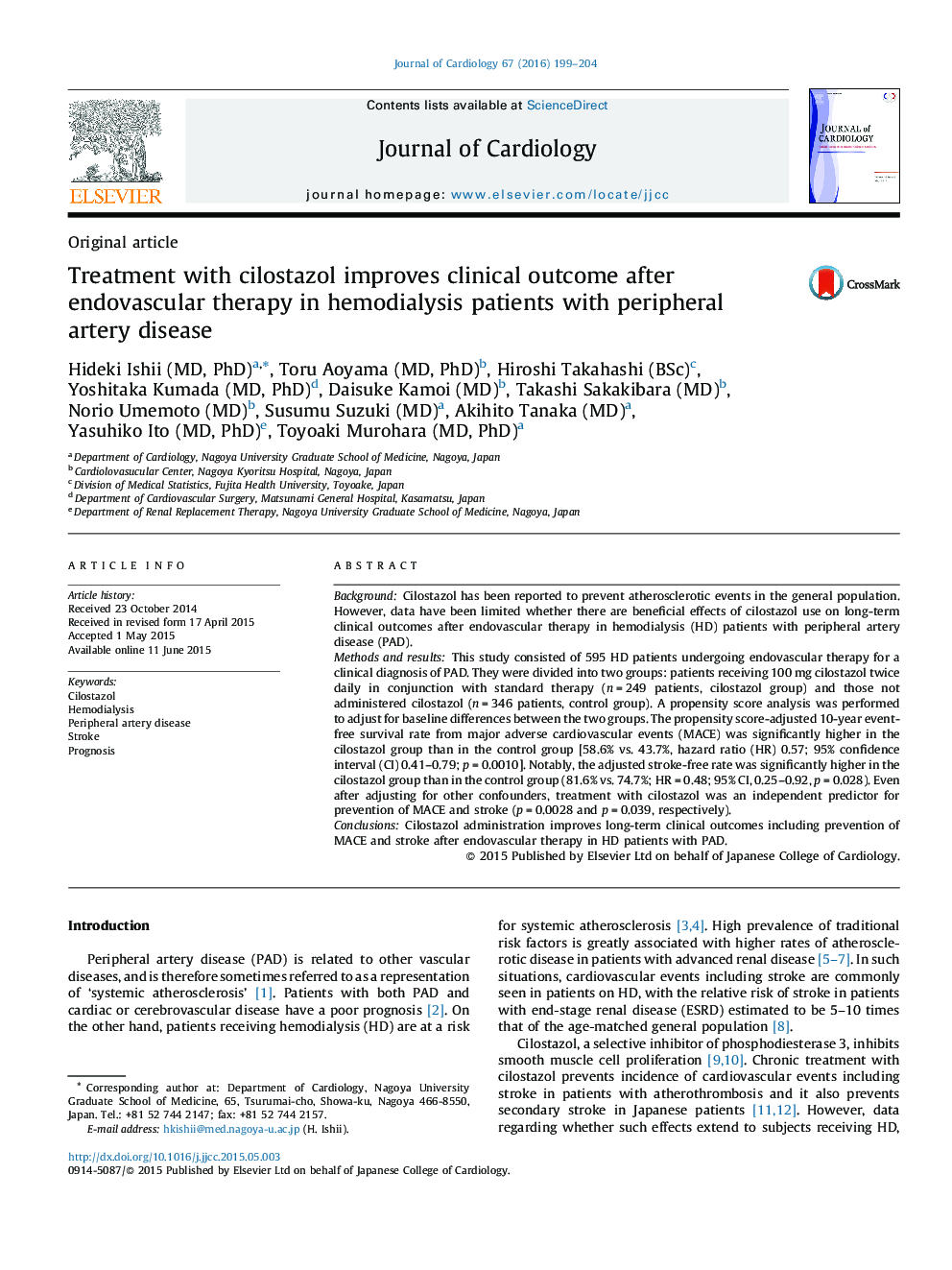| Article ID | Journal | Published Year | Pages | File Type |
|---|---|---|---|---|
| 2962830 | Journal of Cardiology | 2016 | 6 Pages |
BackgroundCilostazol has been reported to prevent atherosclerotic events in the general population. However, data have been limited whether there are beneficial effects of cilostazol use on long-term clinical outcomes after endovascular therapy in hemodialysis (HD) patients with peripheral artery disease (PAD).Methods and resultsThis study consisted of 595 HD patients undergoing endovascular therapy for a clinical diagnosis of PAD. They were divided into two groups: patients receiving 100 mg cilostazol twice daily in conjunction with standard therapy (n = 249 patients, cilostazol group) and those not administered cilostazol (n = 346 patients, control group). A propensity score analysis was performed to adjust for baseline differences between the two groups. The propensity score-adjusted 10-year event-free survival rate from major adverse cardiovascular events (MACE) was significantly higher in the cilostazol group than in the control group [58.6% vs. 43.7%, hazard ratio (HR) 0.57; 95% confidence interval (CI) 0.41–0.79; p = 0.0010]. Notably, the adjusted stroke-free rate was significantly higher in the cilostazol group than in the control group (81.6% vs. 74.7%; HR = 0.48; 95% CI, 0.25–0.92, p = 0.028). Even after adjusting for other confounders, treatment with cilostazol was an independent predictor for prevention of MACE and stroke (p = 0.0028 and p = 0.039, respectively).ConclusionsCilostazol administration improves long-term clinical outcomes including prevention of MACE and stroke after endovascular therapy in HD patients with PAD.
